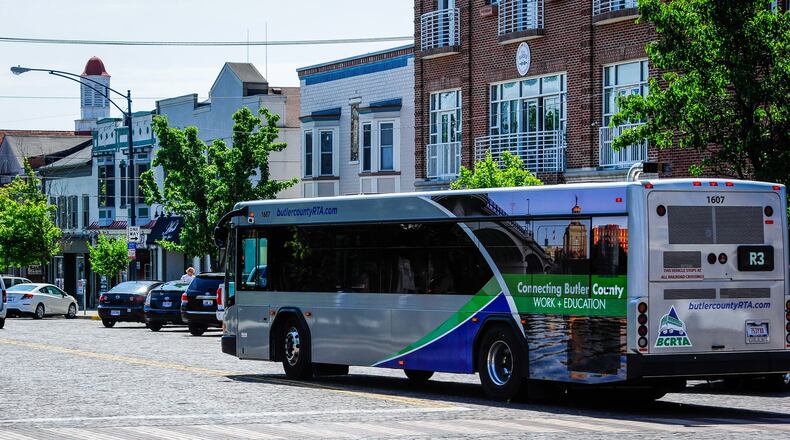The commissioners usually disperse about $1.2 million in CDBG funds and $600,000 in HOME funds. Eligible projects must be in a geographic area populated by poor to moderate-income residents and benefit that same demographic.
RELATED: Butler County wants to bolster affordable housing stock with funding requests
There is a consolidated planning committee comprised of the development department that oversees the program, the county engineer, Job and Family Services and the Water and Sewer Department, that grades funding applications from the various jurisdictions and agencies countywide and makes recommendations to the commissioners.
How much money a community has received previously is a factor.
“We do try to look at, well, where are the worst of the worst areas where the local communities just don’t have capacity to do some of these projects?” Development Director David Fehr said about the selection process.
“The third factor that’s definitely discussed is if the community is offering a local match. Not necessarily dollar for dollar because some of these communities are not as wealthy as others, but if they at least have some skin in the game.”
For the funding cycle beginning in May, the committee recommended approving 14 CDBG grants totalling just more than $1 million and six HOME grants of $1.2 million in total. The county has about $500,000 in extra HOME money to contribute.
The city of Middletown does not have it’s own HOME program directly with HUD, so it partners with the county to get the funding, this year the allocation is $260,000. Likewise, the cities of Fairfield and Oxford don’t directly get federal block grants, hence the $120,000 award for each city on the commissioners’ list, for a total of $240,000.
Over the past five years the county’s Care Facility has received the largest allotment of federal funds, at $933,000, to pay for a new roof and various other repairs. The nursing home is slated to receive a $55,000 elevator and sprinkler system upgrade this year.
Commissioner Don Dixon told the Journal-News capital improvements at the home were deferred for a number of years and the repairs and improvements were in some cases critical to the stability of the structure.
Commissioner T.C Rogers previously gave his main reason for making the nursing home a priority over some of the other funding requests.
“The primary reason for the funds to begin with is to help the less fortunate,” Rogers said. “So we made the determination this is like a concentrated area where the money can be spent on the type of population it was intended for.”
The 109-bed facility is one of 22 county-run nursing homes left in Ohio. The nursing homes were previously mandated in all 88 counties, but many of the facilities closed after the state legislature lifted the mandate, and counties opted to let the private sector handle nursing care as government budgets shrank.
“I think you have to put a safety net out there, to catch the people who fall through the cracks in every other system,” Commissioner Cindy Carpenter said about keeping the home and investing CDBG money in it.
Hanover Twp. has received the second largest allocation since 2015 for a total of $310,00, including $176,000 for curb and gutter replacement in the Alamo Heights area five years ago. The township applied for $450,189 in the current round for a culvert replacement and ADA restrooms and other amenities for Memorial Park and paving the Community Center parking lot. The projects are not recommended.
MORE: $1 million water tower in New Miami no longer sits dormant
Township Administrator Bruce Henry said he repeatedly asks for the park improvements because they are a priority for the residents. The commissioners won’t approve the applications for a couple months but Henry accepted defeat.
“Oh well, we just have to go back to the drawing board,” Henry said.
People Working Cooperatively has received the largest amount of HOME funding over the years for emergency home repairs. Milford Twp. got the largest chunk last year, $190,000, to pave nearly all the streets in the now defunct village of Somerville. New Miami has received a total of $203,114 for its water system, after the commissioners learned the new $1 million water tower the village installed sat dormant for almost six years because of a missing pressure reducing valve.
About the Author
